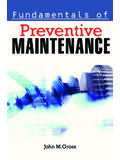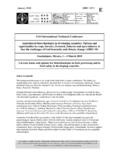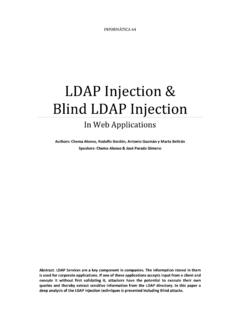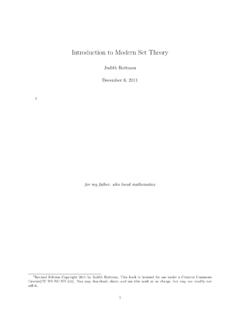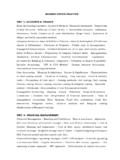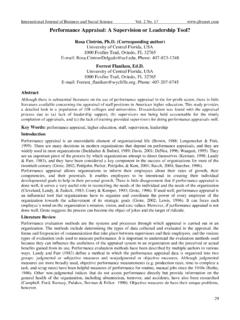Transcription of Introduction to Medical Electronics Applications
1 Electronics Applications r D Jennings A Flint BCH Turton LDM Nokes Introduction to Medical Electronics Applications Introduction to Medical Electronics Applications D. Jennings, A. Flint, firton and Nokes School of Engineering University of Wales, College of Cardiff Edward Arnold A member of the Hodder Headline Group LONDON BOSTON SYDNEY AUCKLAND First published in Great Britain in 1995 by Edward Arnold, a division of Hodder Headline PLC, 338 Euston Road, London NWl 3BH Distributed in the USA by Little, Brown and Company 34 Beacon Street, Boston, MA 02108 0 1995 D. Jennings, A. Flint, Turton and Nokes All rights reserved. No part of this publication may be reproduced or transmitted in any form or by any means, electronically or mechanically, including photocopying, recording or any information storage or retrieval system, without either prior permission in writing from the publisher or a licence permitting restricted copying.
2 In the United Kingdom such licences are issued by the Copyright Licensing Agency: 90 Tottenham Court Road, London WlP 9HE. Whilst the advice and information in this book is believed to be true and accurate at the date of going to press, neither the author nor the publisher can accept any legal responsibility or liability for any errors or omissions that may be made. In particular (but without limiting the generality of the preceding disclaimer) every effort has been made to check drug dosages; however, it is still possible that errors have been missed. Furthermore, dosage schedules are constantly being revised and new side effects recognised. For these reasons the reader is strongly urged to consult the drug companies printed instructions before administering any of the drugs recommended in this book.
3 British Library Cataloguing in Publication Data A catalogue record for this book is available from the British Library ISBN 0 340 61457 9 12 3 4 5 95 96979899 qpeset in Times by GreenGate Publishing Services, Tonbridge, Kent Printed and bound in Great Britain by Arrowsmith Ltd., Bristol Contents Preface 1 Introduction 2 Anatomy and Physiology Introduction Anatomical terminology Structural level of the human body Muscular system Skeletal system Nervous system Cardio-vascular system Respiratory system 3 Physics The nature of ionising radiation Physics of radiation absorption, types of collision Radiation measurement and dosimetry Outline of the application of radiation in medicine - radiology, radiotherapy Physics of NMR Ultrasound Physics of ultrasound The Doppler effect Generation and detection of ultrasound 4 Physiological Instrumentation Introduction Measurement s y s tems Transducers Biopotentials Blood pressure measurement vii 1 5 5 6 8 12 19 20 28 34 38 38 42 43 45 45 51 52 60 66 75 75 76 82 84 95 5 Imaging Fundamentals and Mathematics Purpose of imaging Mathematical background Imaging theory Image processing 6 Imaging Technology Projection X radiography Computerised tomogaphy Gamma camera Nuclear magnetic resonance imaging Ultrasound imaging Doppler ultrasound 7 Computing Classification of computers Outline of computer architecture Data acquisition Computer networks Databases Clinical expert systems Privacy.
4 Data protection and security Practical considerations 8 Hospital Safety Electrical safety Radiation hazards 109 109 110 116 121 124 124 134 1 40 143 148 162 169 170 170 180 181 185 196 200 202 204 204 213 References 215 Index 219 Preface This book is intended as an introductory text for Engineering and Applied Science Students to the Medical Applications of Electronics . A course has been offered for many years in Cardiff in this arena both in this College and its predecessor institution. A new group, the Medical Systems Engineering Research Unit, was established following the reorganisation of the College. Restructuring and review of our course material and placing the responsibility for teaching this course within the new group led to a search for new material.
5 Whilst we found a number of available texts which were suitable for aspects of our new course, we found a need for a text which would encompass a wide scope of material which would be of benefit to students completing their degree programmes and contemplating professional involvement in Medical Electronics . Medical Electronics is a broad field. Whilst much of the material which an entrant to Medical Applications must acquire is the conventional basis of Electronics covered by any student of Electronics , there are areas of special emphasis. Many of these arise from areas which are increasingly inaccessible to students who necessarily specialise at an early stage in their education. The need for diversity is reflected in the educational background and experience of the authors.
6 Amongst us is a Medical Practitioner who is also a Mechanical Engineer, a Physicist who now works as a Software Engineer, an Electronics Engineer who made the same move, and another Electronics Engineer with some experimental experience in Orthopaedics. The material which this book attempts to cover starts with an Introduction which hopefully provides some perspective in the subject area. The following chapter provides an Introduction to human anatomy and physiology. The approach taken here is necessarily simplified: it is our intention to provide an adequate grounding for the material in the following chapters both in its basic science and the nomenclature which may be unfamiliar to readers with only elementary biological knowledge. Chapter Three describes the Physics employed in diagnostic techniques.
7 This encompasses basic radiation physics, magnetic resonance and the nature and generation of ultrasound. Chapter 4 discusses the form of some of the basic electronic elements used in Medical Applications . We describe the specialised techniques which are employed and characterise the signals which are likely to be encountered. Special emphasis is attached to issues of patient safety, although these are covered in greater depth in Chapter 8. The mathematical background for image processing is covered in Chapter 5. This material has been separated from our description of representative diagnostic imaging technologies pre- sented in Chapter 6. This latter Chapter includes material supplied by Toshiba Medical Systems, whose assistance we gratefully acknowledge.
8 Viii Introduction to Medical Electronics Applications Chapter 7 contains background material concerning computers, their architecture, application to data acquisition and connection to networks. It also covers some aspects of the application of Databases and Expert Systems to Medicine which have long been expected to play central roles in patient care. The increasing capacity of systems together with their continuing cost reductions mean that their Introduction is now becoming a reality. The introductory parts of this Chapter will be familiar to many engineers: we have included it to ensure that this book shall have a wide enough sphere of interest. Finally, Chapter 8 examines aspects of patient safety which are of concern to engineers. This area is a particularly difficult one in which to be specific as it is intimately entwined with changing legislation.
9 We seek to present here principles and what we believe to be good practice: these must form the basis of any competent engineer s activity. This book has been some time in gestation. We wish to acknowledge the patience of our families, without whom no doubt the task would have been completed more quickly. We have been assisted too in no small measure by students and researchers in the Medical Systems Engineering Research Unit who have provided both constructive criticisms and help by checking manuscripts. Introduction This book is concerned with describing the application of technological methods to Medical diagnosis and therapy. It is instructive to review its development through recorded history. It is apparent that the fastest advances in the application of technology to medicine have occurred in the 20th Century and with an increasing pace.
10 The following paragraphs touch on some events in this chain. We should recall that systematic technological assistance has only recently been widely applied to medicine through engineering. An understanding of the pathology which technology often helps to identify has largely been developed hand in hand with its application. In these paragraphs, we identify a number of the technologically based systems which are described more fully in the succeeding chapters: their descriptions here are necessarily rather terse. Medicine arose as a Scientific discipline in ancient times. Bernal(1957) notes that by the time of the establishment of the Greek civilisation, physicians were a notable professional group whose activities were essential to the affluent, partly as a result of their unhealthy lifestyle.
